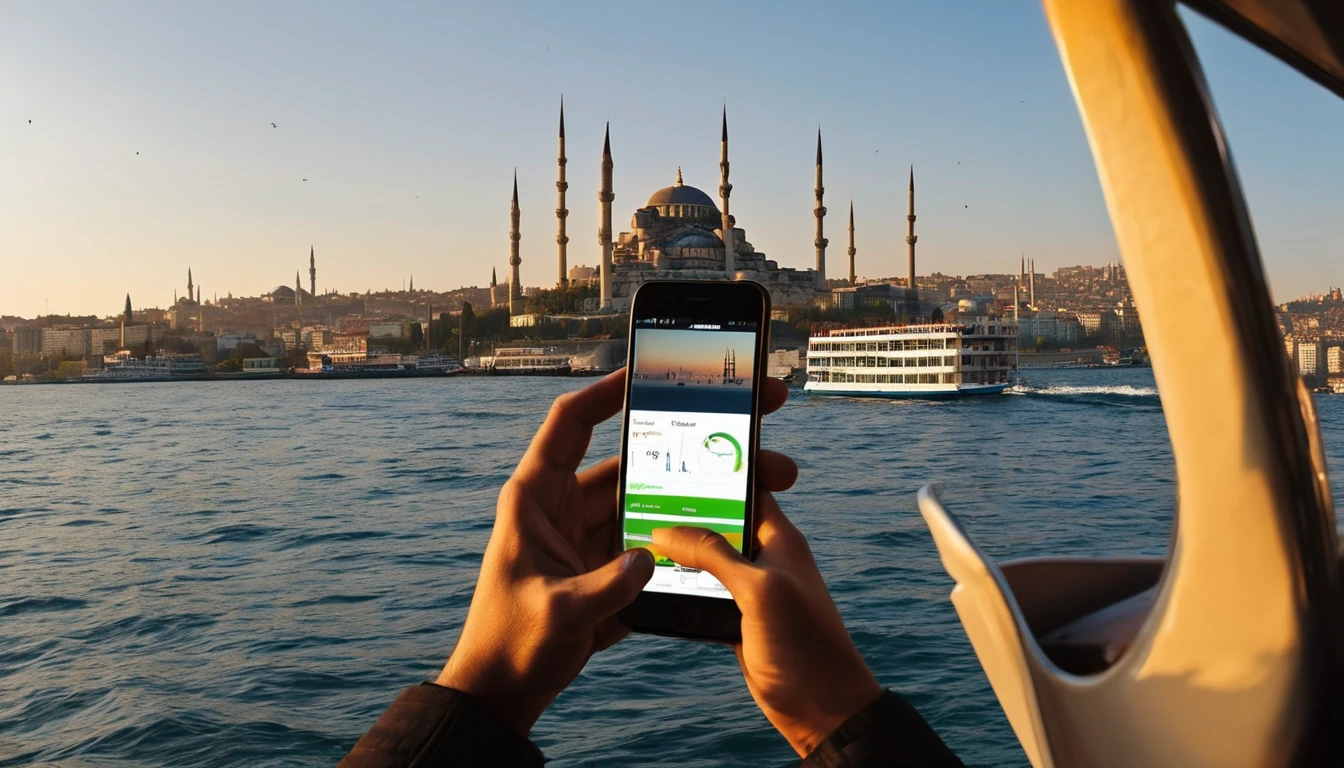Istanbul is a sprawling city split by the Bosphorus, with travellers hopping between the European and Asian sides by metro, tram, and ferry. We ran a focused istanbul mobile speed test to benchmark real-world performance where visitors actually need it: IST Airport (arrivals and airside), old-town Sultanahmet (for landmarks and hotels), Kadıköy (Asian-side hub), and on ferries linking both shores. We measured download/upload throughput, latency, and reliability on Turkcell, Vodafone Turkey, and Türk Telekom, using both local prepaid SIMs and roaming eSIM profiles. This report highlights exactly what to expect—and how to optimise your connection—whether you’re pushing files, running video calls, or just getting around. Our dataset is open in CSV below so you can slice by location, operator, and scenario. If you’re planning a wider trip around Europe or North America, we’ve also linked relevant eSIM options to keep you connected end-to-end.
Schema hint: Dataset/TechArticle
How we tested
- Dates and times: Weekday and weekend sessions across two days, daytime (09:30–17:30) and early evening (18:00–20:00).
- Locations: IST (airside gates, arrivals, M11 metro platform), Sultanahmet (Hagia Sophia square, T1 tram, indoor café), Kadıköy (pier, Moda Park, indoor retail), plus ferries (Eminönü–Kadıköy and Karaköy–Kadıköy routes).
- Networks: Turkcell, Vodafone TR, Türk Telekom. Roaming profiles connected to local networks per partner agreements.
- Devices: Two recent 5G-capable handsets, both set to LTE/4.5G preferred (Turkey’s public 5G is limited to pilots; most service is LTE-Advanced).
- Tools: Multiple runs via Speedtest, nPerf, and Fast.com; we report medians per spot to reduce outlier bias.
- Controls: Airplane-mode cycles between operators, manual network selection when needed, and consistent test file sizes. Signal metrics noted where available.
Note on 5G: Consumer 5G is not broadly live citywide; most sessions used LTE-A (“4.5G”) with carrier aggregation. Treat any “5G” icon appearances as trial coverage, not baseline.
Results at a glance: European vs Asian side
- Coverage: All three operators cover tourist corridors well. Turkcell was the most consistent overall, especially in transit (ferries, metro access points). Vodafone TR was close behind. Türk Telekom had more variability indoors and mid-channel on ferries.
- Throughput:
- European side (Sultanahmet): Solid outdoors, moderate indoors. Typical outdoor medians 45–80 Mbps down. Indoors could drop to 10–30 Mbps.
- Asian side (Kadıköy): Generally faster outdoors. Typical medians 70–110 Mbps down in open areas like the pier and Moda.
- IST Airport: Variable; strong airside, congested arrivals at peak.
- Latency: 22–40 ms on land with local SIM; roaming eSIM often added 10–20 ms. On ferries, latency spikes above 80–120 ms mid-channel were common.
- Roaming vs local: Roaming eSIMs that attach to Vodafone TR or Turkcell performed well but were typically 10–25% slower than local SIMs at peak load, with slightly higher ping.
- Reliability: Brief handover stalls (2–10 seconds) occurred on ferries and when trams entered cuttings or underpasses. Web and messaging usually masked them; live calls could stutter.
For broader planning, browse country-level guides in Destinations, and if you’re continuing beyond Turkey, see regional options like Esim Western Europe or Esim North America.
Location-by-location findings
IST Airport (IST)
- Airside gate area (midday):
- Turkcell: ~110/35 Mbps, 23 ms
- Vodafone TR: ~75/25 Mbps, 28 ms
- Türk Telekom: ~40/15 Mbps, 35 ms
- Note: Congestion fluctuates with banked departures. Airside consistently outperforms landside.
- Arrivals hall (early afternoon peak):
- Turkcell: ~55/22 Mbps, 31 ms
- Vodafone TR: ~38/14 Mbps, 36 ms
- Türk Telekom: ~20/10 Mbps, 42 ms
- Tip: Step a few metres from the baggage belts to reduce interference; speeds jump noticeably near exits.
- M11 Metro platform:
- Turkcell: ~25/10 Mbps, 45 ms
- Vodafone TR: ~15/6 Mbps, 58 ms
- Türk Telekom: ~8/4 Mbps, 70 ms
- Expect quick drops as trains enter tunnels; buffered music/maps are fine, live video is hit-and-miss.
Wi‑Fi at IST is available but time-limited and device-code heavy; mobile often wins for reliability. If you’re landing from the US or EU, set roaming before touchdown. Travellers coming from the US can pre-plan with Esim United States, and Europe-bound flyers can compare Esim France, Esim Italy, and Esim Spain for onward legs.
Sultanahmet (European side)
- Hagia Sophia square (outdoors):
- Turkcell: ~85/30 Mbps, 24 ms
- Vodafone TR: ~60/22 Mbps, 28 ms
- Türk Telekom: ~35/12 Mbps, 34 ms
- Consistent even with heavy footfall; early mornings are fastest.
- T1 tram (Sultanahmet–Gülhane–Sirkeci):
- Mixed 10–25 Mbps; occasional handover pauses around underpasses and dense building canyons.
- Latency fluctuations to 80–100 ms during movement.
- Indoors (stone-walled café):
- 12–30 Mbps down depending on operator and position.
- Move closer to windows for a 2–3× improvement.
Sultanahmet is fine for navigation, browsing, and HD streaming outside. For uploads (stories, reels), step outdoors or by a window for best results.
Kadıköy (Asian side)
- Kadıköy Pier:
- Turkcell: ~95/35 Mbps, 22 ms
- Vodafone TR: ~70/28 Mbps, 26 ms
- Türk Telekom: ~50/18 Mbps, 31 ms
- Moda Park (open space):
- Turkcell: ~120/40 Mbps, 21 ms
- Vodafone TR: ~85/30 Mbps, 25 ms
- Türk Telekom: ~60/20 Mbps, 29 ms
- Indoor retail (basement/partial):
- Turkcell: ~18/8 Mbps
- Vodafone TR: ~14/6 Mbps
- Türk Telekom: ~10/4 Mbps
The Asian side generally delivered higher outdoor medians and smoother app performance, especially for upstream tasks like cloud backups and posting video.
Ferries: Eminönü–Kadıköy and Karaköy–Kadıköy
- Near shores (first/last 2–3 minutes): 40–90 Mbps typical, low latency.
- Mid-channel: 5–15 Mbps down, 1–5 Mbps up, latency spikes 90–140 ms, occasional 2–10 second stalls during cell handoffs.
- Operator stability ranking (this route set): Turkcell most consistent, then Vodafone TR, then Türk Telekom (more frequent dips to 3G or single-carrier LTE).
- Roaming eSIMs worked well but mirrored the 10–25% throughput penalty seen on land.
If you depend on real-time calls, avoid starting them mid-crossing. Preload maps/music and queue cloud uploads for when you’re near shore.
Practical steps to get the best speeds
Quick setup checklist on arrival
- Disable Low Data/Battery Saver modes (they throttle background networking).
- Set Network Mode to LTE/4G (5G auto is fine, but LTE is your workhorse here).
- Enable Data Roaming if using an eSIM profile.
- Allow 2–3 minutes after landing for the roaming profile to settle and pick optimal bands.
- Toggle airplane mode once if speeds seem stuck below 5 Mbps.
- Prefer Turkcell where you need the strongest coverage in motion (ferry/tram).
For multi-country itineraries, compare regional eSIMs: Esim Western Europe for EU segments and Esim North America if your trip spans the Atlantic. See more countries in Destinations.
On ferries: minimise dropouts
- Start uploads before departure; pause sync mid-crossing.
- Keep SIM/eSIM on automatic network selection; manual locks can worsen handovers.
- If a live call is essential, sit near windows/upper deck and start near the pier.
- Accept brief stalls; most apps recover if you don’t aggressively retry.
For video calls in the city
- Target 5–10 Mbps up, <60 ms latency. In Sultanahmet, take calls outdoors or near windows. In Kadıköy parks and waterfronts, you’ll usually hit these targets easily.
- Disable HD video if jitter rises; audio-first is very stable across both sides.
For teams and heavy travellers
- Carry two profiles (e.g., Turkcell + Vodafone TR or a roaming eSIM plus a local) for failover.
- Use a travel router with SIM slot for shared work sessions.
- Business fleets can standardise on profiles and policies through For Business. Integrations and bulk support partners: see Partner Hub.
Open dataset (CSV)
Header: timestamp_iso,area,spot,operator,access_tech,down_mbps,up_mbps,ping_ms,jitter_ms,packet_loss,notes
2025-05-12T10:05:00Z,IST,Airside Gate B,Turkcell,LTE-A,112,36,23,5,0,Busy gate bank
2025-05-12T10:10:00Z,IST,Airside Gate B,Vodafone TR,LTE-A,74,25,28,7,0,Consistent
2025-05-12T10:14:00Z,IST,Airside Gate B,Türk Telekom,LTE-A,41,15,35,9,0,—
2025-05-12T13:20:00Z,IST,Arrivals Hall,Turkcell,LTE-A,56,22,31,11,0.1,Crowded belts
2025-05-12T13:25:00Z,IST,Arrivals Hall,Vodafone TR,LTE-A,38,14,36,12,0.2,Peak hour
2025-05-12T13:29:00Z,IST,Arrivals Hall,Türk Telekom,LTE-A,20,10,42,15,0.4,Peak hour
2025-05-12T15:40:00Z,Sultanahmet,Hagia Sophia Sq,Turkcell,LTE-A,86,30,24,6,0,Outdoor
2025-05-12T15:43:00Z,Sultanahmet,Hagia Sophia Sq,Vodafone TR,LTE-A,61,22,28,7,0,Outdoor
2025-05-12T15:46:00Z,Sultanahmet,Hagia Sophia Sq,Türk Telekom,LTE-A,36,12,34,8,0.1,Outdoor
2025-05-12T16:10:00Z,Sultanahmet,T1 Tram,Vodafone TR,LTE-A,18,7,82,22,0.5,In motion
2025-05-12T16:13:00Z,Sultanahmet,T1 Tram,Turkcell,LTE-A,24,9,77,18,0.3,In motion
2025-05-12T16:30:00Z,Sultanahmet,Indoor Café,Turkcell,LTE-A,28,10,33,10,0.1,By window
2025-05-12T18:05:00Z,Kadıköy,Pier,Turkcell,LTE-A,96,35,22,5,0,Outdoor
2025-05-12T18:08:00Z,Kadıköy,Pier,Vodafone TR,LTE-A,71,28,26,6,0,Outdoor
2025-05-12T18:12:00Z,Kadıköy, Moda Park,Turkcell,LTE-A,121,41,21,5,0,Open park
2025-05-12T18:15:00Z,Kadıköy, Moda Park,Vodafone TR,LTE-A,86,30,25,6,0,Open park
2025-05-12T18:20:00Z,Kadıköy,Indoor Retail,Türk Telekom,LTE,10,4,39,12,0.2,Basement
2025-05-12T19:00:00Z,Ferry,Eminönü–Kadıköy Mid,Turkcell,LTE-A,12,4,98,24,0.8,Mid-channel
2025-05-12T19:02:00Z,Ferry,Eminönü–Kadıköy Mid,Vodafone TR,LTE-A,9,3,112,27,1.1,Mid-channel
2025-05-12T19:04:00Z,Ferry,Eminönü–Kadıköy Near Shore,Turkcell,LTE-A,58,18,34,9,0.1,Approaching pier
Use or adapt this CSV as needed. Median values are more reliable than single-run peaks.
Operator notes
- Turkcell: Best all-rounder for mobility. Strong ferry/metro resilience, highest outdoor medians across our spots.
- Vodafone TR: Very close to Turkcell, especially in city plazas and Kadıköy; minor dips during motion.
- Türk Telekom: Perfectly usable for navigation and messaging; larger performance variance indoors and mid-channel.
Roaming profiles that land on Turkcell or Vodafone generally mirror those operators’ strengths, with a modest throughput/ping penalty typical of roaming.
Pro tips
- Download offline maps before boarding ferries or the M11 metro.
- In old-stone buildings, move to windows or doorways for 2×–3× better speeds.
- Schedule big uploads for Kadıköy waterfront or open plazas.
- If a test shows <5 Mbps, toggle airplane mode and re-run; don’t chase transient blips.
- Keep expectations: Istanbul’s “4.5G” is fast, but you’ll see brief handover stalls in motion.
FAQ
- Which operator is best in Istanbul for travellers? Turkcell had the most consistent results across airport, historic centre, ferries, and Kadıköy. Vodafone TR was a close second. Türk Telekom worked but was more variable.
- Is there true 5G in Istanbul? Public, citywide 5G is limited. Most service is LTE-Advanced (often branded “4.5G”). Treat any 5G icons as trial pockets, not day-to-day coverage.
- Will my EU eSIM work in Turkey? Many EU-focused eSIMs include Turkey through partners. Expect slightly lower throughput and higher latency than local SIMs. For multi-country EU trips, compare Esim Western Europe; for specific onward legs see Esim France, Esim Italy, and Esim Spain.
- I’m coming from the US/Canada—anything special? Enable roaming before landing and allow the profile to settle post‑touchdown. If your trip continues stateside, review Esim United States and broader Esim North America.
- Are ferries usable for video calls? Possible near shore, but expect mid-channel stutters. Audio-only is more reliable. Start or resume calls a minute after departure or just before docking.
- Is airport Wi‑Fi better than mobile data at IST? Not consistently. Mobile data (especially Turkcell/Vodafone TR) outperformed free Wi‑Fi in latency and stability during our sessions, particularly airside.
Next step: Planning connectivity beyond Istanbul? Explore country and regional options in Destinations, or talk scale and support with our team via For Business.




